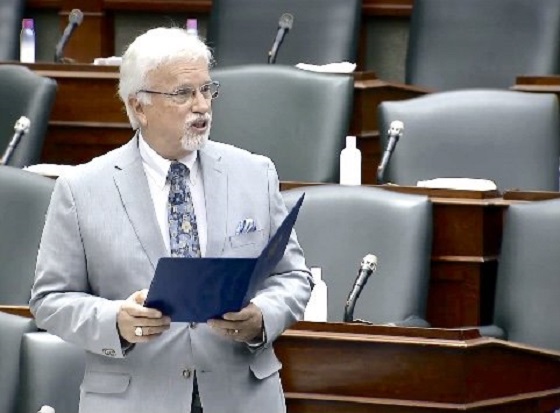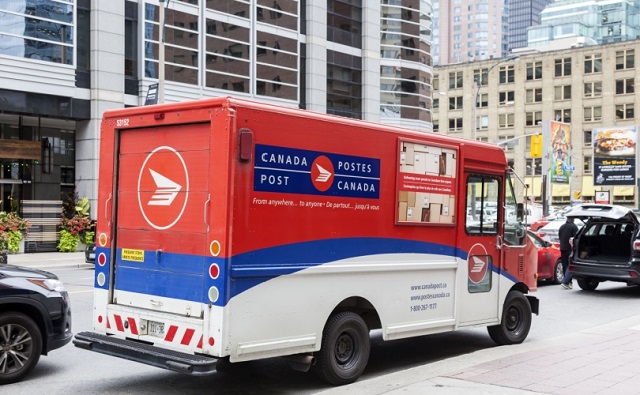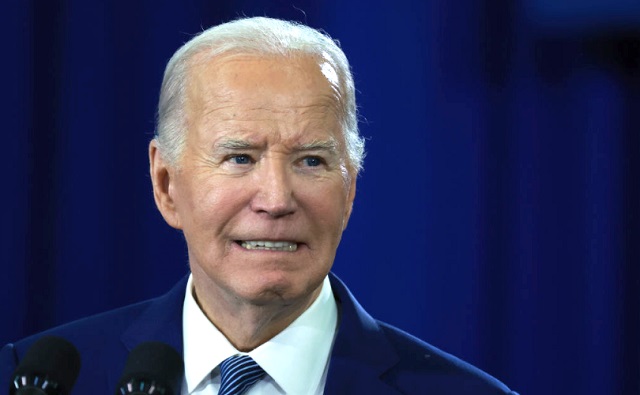Alberta
Premier Smith negotiates publicly with PM Trudeau: cancel ‘just transition’ and collaborate on carbon capture

Letter from Premier Smith to Prime Minister Trudeau
Premier Danielle Smith invites Ottawa to collaborate with Alberta on carbon capture, utilization and storage investment and halt introduction of Just Transition legislation and oil and gas emissions cap.
Dear Prime Minister:
I am writing in follow up to our meeting of February 7th, during which we discussed the need for the Government of Canada to halt introduction of the proposed Just Transition legislation and implementation of unachievable targets and measures under the federal Emissions Reduction Plan (ERP) such as the Clean Electricity Regulations (CER) and oil and gas sector emissions cap.
As a much more productive alternative, I invited your government to agree to commencing a collaborative effort between Ottawa and Alberta to develop a series of cooperative initiatives to attract investment and workers into Alberta’s emerging, conventional and non-conventional energy sectors while substantially reducing Canada’s and Alberta’s net emissions.
In that meeting, you expressed a willingness to pursue this course of collaborative action, but requested it be commenced promptly. The morning following my return to Alberta, I met with several of my ministers regarding this issue and can advise as follows.
The Government of Alberta is prepared to work with the federal government on a coordinated approach for a carbon capture, utilization and storage (CCUS) incentive program for the purpose of net emissions reductions in our province while attracting billions in new investments for Alberta-based oil and gas projects, electricity, manufacturing and other sectors.
To this end, we propose coordinating a federal CCUS income tax credit with an expansion of our current Alberta Petrochemicals Incentive Program (APIP) to include CCUS projects. This new incentive program would be in addition to the over $1.8 billion already invested into CCUS projects across the province by the Government of Alberta as well as our province’s additional implicit contribution to CCUS made through our current royalty regime.
Our government is also willing to discuss with your government expanding this coordinated approach to incentivizing other emerging emission reducing technologies as well, though we suggest beginning with agreement on a coordinated CCUS incentive program, so we are able to establish a successful foundation on which to build upon.
To this end, I request that we immediately create a federal/provincial minister-led working group with the objective of reaching agreement on a coordinated provincial-federal CCUS incentive program in the coming weeks.
Prime Minister, I must make it clear that the above invitation for cooperation and collaboration on this CCUS proposal and other energy and climate initiatives comes with one non-negotiable condition.
It is that the federal government refrain from introducing any new federal legislation or policies that materially impact Alberta’s oil and gas resource development, management or workforce participation without the full involvement, consultation and consent of Alberta.
This includes the contemplated Just Transition legislation and implementation of unachievable targets and measures under the federal Emissions Reduction Plan (ERP) such as the Clean Electricity Regulations (CER) and oil and gas sector emissions cap.
Each of these initiatives, as currently understood, would pose an unconstitutional and existential threat to the Alberta economy and the jobs of hundreds of thousands of Albertans.
As an alternative to this policy package of economic destruction, Alberta proposes working collaboratively with the federal government on aggressively advancing emission reducing technologies in Alberta as outlined above while simultaneously increasing export of LNG through the lens of replacing higher emitting fuels around the world to meet aggressive but achievable overall emissions reduction in Alberta’s oil and gas and other sectors. Ideally, our government would like to incorporate these collaborative federal-provincial initiatives into our soon-to-be-released Alberta Emissions Reduction and Energy Development Plan.
I must once again emphasize to you, Prime Minister, that although Alberta is willing to work as an active partner with the federal government on a coordinated approach to reducing Alberta’s and Canada’s net emissions, under no circumstances will our province accept the imposition of arbitrary and unachievable targets or policies that spell the end of meaningful long-term investment in Alberta’s energy sector, and as a result, the imminent phase out of Alberta’s largest industry. In such circumstances, our government would have no other choice but to oppose these destructive policies using every tool at our disposal in order to protect Albertans, their jobs and our province’s future.
Prime Minister, this issue is far larger and more important than you or I. There are literally hundreds of billions in public revenues and investments, and millions of jobs, riding on Alberta and Ottawa working together – instead of in conflict – on energy and environmental issues to create an attractive and certain investment climate that millions around the world want to invest in and move to.
Failure to do so will not only undermine Canada’s prosperity by driving billions in energy investment and revenue out of Canada and into the hands of the world’s most brutal and undemocratic regimes, but will also result in increased energy poverty and food insecurity in many of the world’s most impoverished countries, a loss of our nation’s global influence, and most ironically, an increase in the world’s global emissions due to an increased use of coal, as opposed to LNG, by developing nations to meet increasing world demand for electricity.
Canada has the potential to become a global energy superpower with all of the economic and political influence for good that such standing would grant us. We can and must seize this opportunity without delay. Please come to the table and work collaboratively with Alberta on likely the most important economic issue facing this country in a generation.
I look forward to reading your response and to learning of the appointment of your government’s side of the federal/provincial minister-led working group for the CCUS incentive program so that our two governments can take our first steps in this critical collaborative effort.
Alberta
Alberta’s vision for passenger rail

Alberta’s government will develop a Passenger Rail Master Plan as the foundation to advancing passenger rail in the province.
Since the early days of Alberta’s development, the province has been shaped by the iron rails that crisscross its landscape. The arrival of the transcontinental railway in the late 19th century brought about profound changes to the way of life, facilitating trade, settlement, and economic prosperity. Towns and cities sprung up along the tracks, serving as vital hubs for commerce and transportation.
Today, the legacy of rail continues to shape Alberta and the rest of Canada. While the modes of transportation may have evolved, the spirit of innovation and connectivity remains as strong as ever. As Alberta experiences record population growth and evolving transportation needs, advancing passenger rail infrastructure is essential for enhancing accessibility, efficiency, and connectivity across the province.
Alberta’s Passenger Rail Master Plan will look forward decades and identify concrete actions that can be taken now as well as in the future to build the optimal passenger rail system for the province. The Master Plan will assess the feasibility of passenger rail in the province, including regional (inter-city), commuter and high-speed services.
“A large and efficient passenger rail network stretching across the province has incredible potential. It represents a forward-looking vision and is a mobility solution for our rapidly growing province and I’m excited to watch this plan take shape and bring us into the future. There’s a lot of work ahead of us, but I’m confident that we will build the network Albertans need to improve daily life and work, boost the economy and take away the stress of long-distance travel.”
“Alberta already has significant public mass transit systems in Calgary and Edmonton for the provincial passenger rail system to build upon. The Master Plan will be a vital tool to guide the province on the next steps in advancing passenger rail. It will provide certainty to the rail sector and ensure the most effective use of tax dollars and government authorities. We look forward to hearing from Albertans and working with municipalities, Indigenous communities and the private sector in advancing passenger rail in the province.”
Passenger rail services connected to urban mass transit shapes and strengthens regional transportation systems, connects communities, supports jobs and the economy and improves access to housing.
“Canada’s railways appreciate the Alberta government’s efforts to conduct a fact-based study on the potential for passenger rail service that recognizes the essential need to protect current and future freight rail capacity. Any proposal to co-locate passenger service in freight corridors must demonstrate the ability to preserve the freight rail capacity required to move goods in support of the province’s economy, today and tomorrow. Rail is the greenest mode of ground transportation for both people and goods.”
The government’s vision is for an Alberta passenger rail system that includes public, private or hybrid passenger rail, including:
- a commuter rail system for the Calgary area that connects surrounding communities and the Calgary International Airport to downtown;
- a commuter rail system for the Edmonton area that connects surrounding communities and the Edmonton International Airport to downtown;
- regional rail lines from Calgary and Edmonton to the Rocky Mountain parks;
- a regional rail line between Calgary and Edmonton, with a local transit hub in Red Deer;
- municipal-led LRT systems in Calgary and Edmonton that integrate with the provincial passenger rail system; and
- rail hubs serving the major cities that would provide linkages between a commuter rail system, regional rail routes and municipal-led mass transit systems.
The vision includes a province-led “Metrolinx-like” Crown corporation with a mandate to develop the infrastructure and oversee daily operations, fare collection/booking systems, system maintenance, and planning for future system expansion.
“At VIA Rail our vision for integrated mobility means dreaming of a future where a passenger can easily switch between commuter rail, light transit, transit buses, and regional trains in an agile and simple way. We’ve already initiated a number of exchanges with partners, and we intend to step up the pace in the coming months and years. I can assure you that as integrated mobility becomes an increasingly important topic of conversation in Alberta, VIA Rail will be there to play a unifying role.”
Alberta’s Passenger Rail Master Plan will ensure government has the required information to make decisions based on where passenger rail delivers the best return on investment. The plan will provide a cost-benefit analysis and define what is required by government, including a governance and delivery model, legislation, funding, and staging to implement passenger rail in Alberta. This work will include a 15-year delivery plan that will prioritize and sequence investments.
“We are excited to see the province taking the next step in committing to regional and intercity rail. This Passenger Rail Master Plan aims to set out a vision for a comprehensive rail network in our province that’s long overdue. We are thrilled to see this process move forward.”
The Master Plan will take into account future growth, planning for the growing provincial population and considering the use of hydrogen-powered trains to ensure a robust and effective passenger rail system to serve Albertans for years to come.
Development of the Master Plan will include engagement with Albertans to gain their perspectives for the future of passenger rail in Alberta.
Alberta’s government has released a Request for Expression of Interest to seek world-class knowledge and consultant services as a first step toward the development of the Passenger Rail Master Plan for Alberta. Following this process, a Request for Proposal will be issued to select a consultant to develop the Passenger Rail Master Plan. The Master Plan is expected to be completed by summer 2025.
Quick facts
- Passenger rail includes:
- Commuter rail – passenger rail that primarily operates within a metropolitan area, connecting commuters to a central city from adjacent suburbs or surrounding commuter towns, and is often traditional heavy-rail
- Regional rail – passenger rail that operates beyond the limits of urban areas and provides inter-city passenger rail transport services and can be traditional heavy-rail or high-speed rail
- Light-rail transit (LRT) – urban passenger rail transit that typically operates small, frequent train service in an urban area. Calgary and Edmonton use LRT as part of their mass transit systems
- Passenger rail in Alberta is currently limited to two tourism-focused services, VIA Rail and Rocky Mountaineer, and LRT in Calgary and Edmonton.
- Budget 2024 includes $9 million to support the development of the Passenger Rail Master Plan this year.
Alberta
Three Calgary massage parlours linked to human trafficking investigation

News release from the Alberta Law Enforcement Response Team (ALERT)
ALERT’s Human Trafficking unit has searched and closed three Calgary massage parlours. A year-long investigation has linked the businesses and its owner to suspected human trafficking.
ALERT arrested Hai (Anna) Yan Ye on April 16, 2024 and charged the 48-year-old with advertising sexual services, drug offences and firearms offences. The investigation remains ongoing and further charges are being contemplated.
Ye was linked to three commercial properties and two homes that were allegedly being used for illegal sexual activities and services. The massage parlours were closed following search warrant executions carried out by ALERT, the Calgary Police Service, and the RCMP:
- Seagull Massage at 1034 8 Avenue SW;
- 128 Massage at 1935 37 Street SW; and
- The One Massage Centre at 1919 31 Street SE.
- 1100-block of Hidden Valley Drive; and
- 3100-block of 12 Avenue SW.
As result of the search warrants, ALERT also seized:
- $15,000 in suspected proceeds of crime;
- Shotgun with ammunition; and
- Various amounts of drugs.
“We believe that these were immigrants being exploited into the sex trade. This has been a common trend that takes advantage of their unfamiliarity and vulnerability,” said Staff Sergeant Gord MacDonald, ALERT Human Trafficking.
Four suspected victims were identified and provided resources by ALERT’s Safety Network Coordinators.
ALERT’s investigation dates back to February 2023 when a tip was received about suspicious activity taking place at the since-closed Moonlight Massage. That location was closed during the investigation, in December 2023, when the landlord identified illegal suites on the premises.
The investigation involved the close cooperation with City of Calgary Emergency Management and Community Safety, Alberta’s Safer Communities and Neighbourhoods (SCAN) team, Canada Border Services Agency (CBSA), and the RCMP.
Ye was released from custody on a number of court-imposed conditions.
Anyone with information about this investigation, or any case involving suspected human trafficking offences, is asked to call Crime Stoppers at 1-800-222-TIPS (8477) or the Calgary Police Service non-emergency line at 403-266-1234.
ALERT was established and is funded by the Alberta Government and is a compilation of the province’s most sophisticated law enforcement resources committed to tackling serious and organized crime.
-

 Business22 hours ago
Business22 hours agoOttawa’s capital gains tax hike—final nail in ‘business investment’ coffin
-

 Alberta2 hours ago
Alberta2 hours agoAlberta’s vision for passenger rail
-

 Automotive22 hours ago
Automotive22 hours agoCanadian interest in electric vehicles falls for second year in a row: survey
-

 COVID-1915 hours ago
COVID-1915 hours agoFormer Canadian lawmaker has no regrets about refusing COVID shot despite losing his job
-

 Alberta15 hours ago
Alberta15 hours agoCanada’s postal service refuses to help with Trudeau’s gun ban buyback program: report
-

 COVID-1914 hours ago
COVID-1914 hours agoPeckford: Hallelujah! Supreme Court of Canada to hear Newfoundland and Labrador charter case
-

 Alberta3 hours ago
Alberta3 hours agoThree Calgary massage parlours linked to human trafficking investigation
-

 Alberta1 day ago
Alberta1 day agoPrincipal at Calgary Elementary School charged with possession of child pornography









